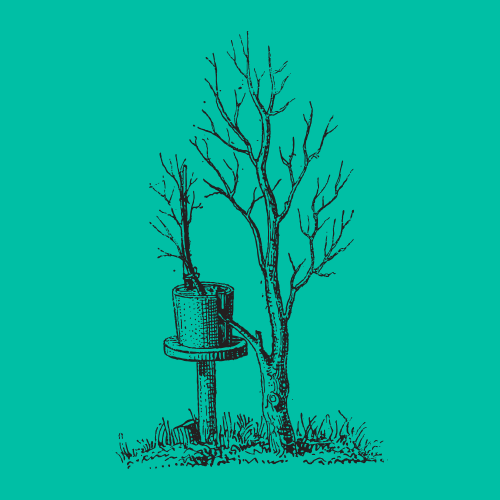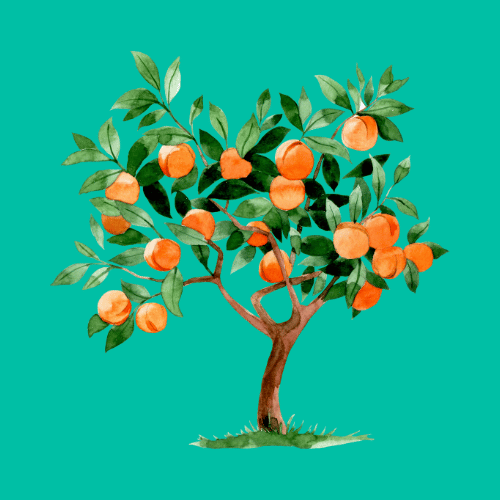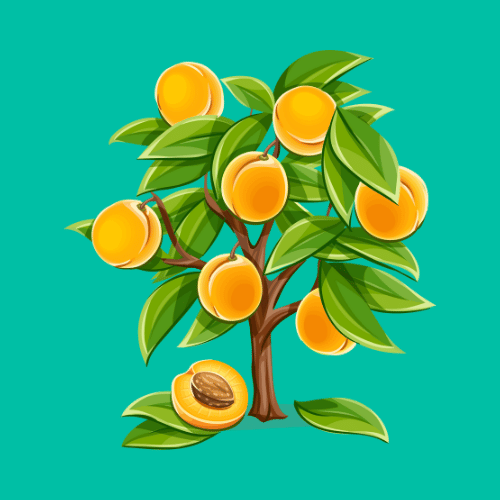How to Propagate a Fruit Tree with Air Layering

Fruit trees are a joy to have in your garden, but buying new ones can get pricey. Luckily, there’s a simple and budget-friendly way to grow more trees —
air layering!
This propagation technique lets you clone your favorite fruit trees without needing seeds or grafting. Intrigued? Let’s break it down step-by-step.
You can also watch the video and see how we’ve used the Air Layering Technique to Propagate our Fruit Tree.
Get our Gardening Buddy and find veggies that fit your conditions best.
You Can Grow It!
What is Air Layering?
Air layering is a method of propagating plants by encouraging roots to grow on a branch while it’s still attached to the parent tree. Once the branch develops roots, you can cut it off and plant it as a new tree. This technique is perfect for fruit trees like apples, pears, figs, and citrus because it produces an exact copy of the parent tree.
Why Choose Air Layering?
- Guaranteed Results: You know the fruit quality since the new tree is genetically identical to the parent.
- Quicker Growth: Unlike growing from seeds, air-layered trees are mature and bear fruit faster.
- Cost-Effective: Why buy a new tree when you can grow one for free?
What You’ll Need
Here’s your quick checklist for air layering supplies:
- A healthy branch (preferably pencil-thick or thicker)
- Sharp knife or pruning tool
- Sphagnum moss or coconut coir
- Plastic wrap or a small plastic bag
- Twine or tape
- Optional: Rooting hormone for faster results

Step-by-Step Guide to Air Layering
1. Choose the Right Branch
Select a healthy, mature branch that gets plenty of sunlight. Make sure it’s free of pests or diseases.
2. Prepare the Branch
Using a sharp knife, remove a ring of bark about 1 to 2 inches wide. This is called “girdling.” Be careful not to damage the inner wood. The goal is to interrupt the flow of nutrients, encouraging the branch to grow roots instead.
3. Apply Rooting Medium
Soak some sphagnum moss in water until it’s damp but not dripping. Wrap the moss around the exposed area of the branch. If you have rooting hormone, apply it to the wound before adding the moss.
4. Secure the Moss
Wrap plastic around the moss to hold it in place. Make sure it’s snug but not too tight, as roots need some space to grow. Use twine or tape to seal both ends, keeping moisture in and air out.
5. Wait (and Watch)
Patience is key here. Roots can take several weeks to a few months to form, depending on the tree species and climate. Check the moss every few weeks to ensure it stays moist.
6. Detach and Plant
Once you see roots through the plastic wrap, it’s time to cut the branch. Use sharp pruning shears to make a clean cut below the rooted section. Plant your new tree in a pot or directly in the ground.
Pro Tips for Success
- Timing Matters: Spring and early summer are the best times for air layering because trees are actively growing.
- Moisture is Key: If the moss dries out, the roots may fail to develop. Check often, especially in hot weather.
- Pick the Right Tree: Not all fruit trees are ideal for air layering. Stick to those known to root easily, like figs, citrus, and guava.

Common Questions About Air Layering
Air layering might seem straightforward, but like any gardening technique, it raises some questions. Let’s dive deeper into the most frequently asked ones.
How Long Does Air Layering Take?
Root formation usually takes 6 to 12 weeks, but this varies depending on the tree species, climate, and care. Fast-rooting trees like figs may show results in just a month, while slower-growing species like citrus could take up to three months or more. Be patient and keep the moss moist—it’s worth the wait!
Do I Need Rooting Hormone?
Rooting hormone isn’t a must, but it can help. Some plants, especially hardwood species, are slow to develop roots naturally. A dab of rooting hormone on the girdled area encourages faster and stronger root growth. It’s especially useful if you’re working with stubborn fruit trees like cherries or apples.
Can I Air Layer Multiple Branches at Once?
Absolutely! If you’re eager to grow several new trees, you can air layer multiple branches on the same tree. However, avoid overdoing it. A tree needs energy to sustain itself, and removing too many branches can stress it. Limit yourself to two or three branches per tree at a time, depending on its size and health.
What Happens If the Moss Dries Out?
Moisture is essential for root development. If the moss dries out, the process may stall, and roots might not form at all. To avoid this, check the moss regularly—especially during hot, dry weather. If it feels dry, use a syringe or small watering can to moisten it without unwrapping the plastic.
What if I Don’t See Roots?
No roots? Don’t panic just yet. Some trees simply take longer, especially if conditions aren’t perfect. Check that the moss remains moist, and ensure the plastic wrap is tightly sealed. If you still see no progress after three months, inspect the branch for signs of life. If it looks healthy, you can try applying fresh rooting hormone and rewrapping the moss.
When Should I Detach the Branch?
Only detach the branch once you see a generous cluster of roots through the plastic wrap. Cutting too early can lead to failure, as the young tree won’t have enough roots to support itself. If you’re unsure, wait another couple of weeks to give the roots more time to strengthen.
Can I Air Layer All Year Round?
While it’s possible to air layer year-round in warm climates, the best time is during the growing season—typically spring to early summer. During this period, the tree’s active growth promotes faster root development. In colder climates, avoid air layering in late fall or winter when trees are dormant.
What’s the Success Rate of Air Layering?
When done correctly, air layering has a high success rate—up to 80% or more for most fruit trees. Success largely depends on choosing the right branch, maintaining moisture, and having a healthy parent tree.
Do I Need Special Tools for Air Layering?
Not at all! You can achieve great results with basic garden tools like a knife, plastic wrap, and moss. However, investing in high-quality pruning shears and a sharp grafting knife can make the process smoother and safer. Rooting hormone is optional but a good addition to your kit.
Can I Use Regular Soil Instead of Moss?
Sphagnum moss is preferred because it retains moisture while staying airy, which encourages root growth. Regular soil can work in a pinch but might compact too tightly around the branch, limiting airflow and slowing root formation. If you must use soil, mix it with sand or perlite to improve drainage.
Will the Parent Tree Suffer After Air Layering?
Not at all, provided you don’t overdo it. Removing one or two branches won’t harm a healthy tree. Just avoid air layering multiple branches at once, and give the tree time to recover before attempting another round.
How Do I Care for the New Tree After Planting?
Once detached, plant the new tree in well-draining soil and water it immediately. Place it in a shaded area for the first few weeks to reduce transplant shock. Gradually introduce it to full sun over time, depending on the species. Consistent watering and a little fertilizer will help it establish quickly.
Can Air Layering Be Done on All Trees?
Not all trees respond well to air layering. While most fruit trees like figs, citrus, apples, and guavas are ideal candidates, others like cherries and plums may require more effort. Hardwoods or trees with thick, tough bark might be better suited for grafting or other propagation techniques.

Final Thoughts
Air layering is a fantastic way to expand your fruit tree collection without breaking the bank.
With a little patience and care, you can propagate trees that produce delicious fruit for years to come. Ready to give it a try? Grab your tools and start air layering—you’ll be a pro in no time!
Get our Gardening Buddy and find veggies that fit your conditions best.
You Can Grow It!
Partners and Sponsors
We are forever grateful to our partners and sponsors. Send an email to team @ strongecho.com and let’s see how we can grow each other’s impact!





